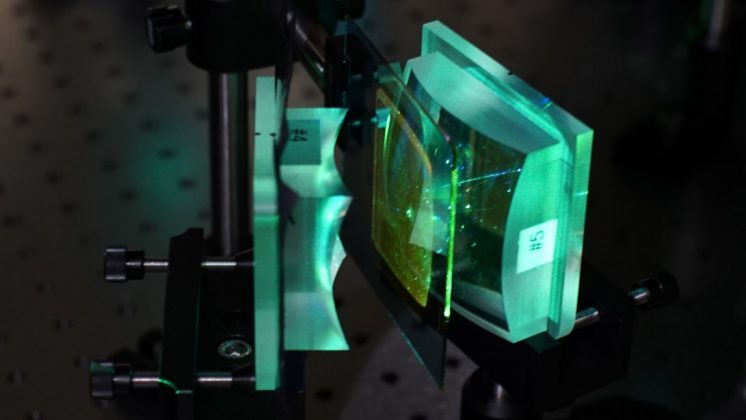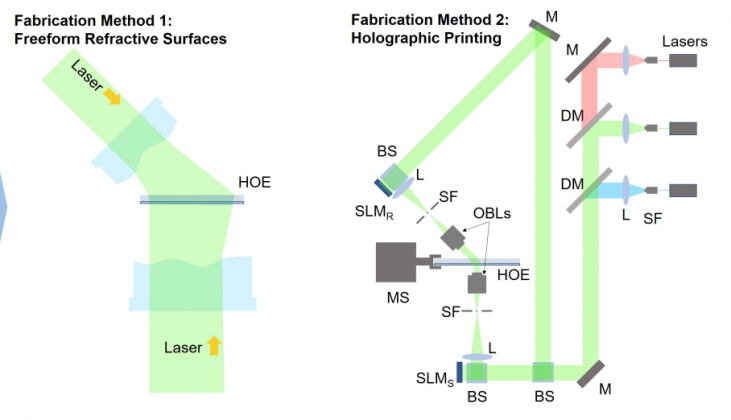Researchers from Facebook Reality Labs have shared new methods for the design & fabrication of compact holographic lenses for use in XR headsets.
The lenses used in most of today’s XR devices are typical refractive lenses which can be fairly bulky, especially as they are optimized for certain optical characteristics. Fresnel (ridged) lenses are frequently used in XR headsets to improve optical performance without adding too much bulk.
In theory, holographic lenses are a promising approach for XR optics thanks to their ability to perform the same (or even more advanced) functions of a traditional lens, but in the space of a wafer-thin film. However, designing and fabricating holographic lenses with high optical performance is far more difficult today than it is with typical refractive optics.
In an effort to move us one step closer to the practical use of holographic lenses in XR devices, Facebook Reality Labs researchers Changwon Jang, Olivier Mercier, Kiseung Bang, Gang Li, Yang Zhao, and Douglas Lanman have detailed new methods for creating them. This could go a long way toward making it possible to build, at scale, the kind of compact XR glasses Facebook recently demonstrated.
In a paper published in the peer-reviewed journal ACM Transactions on Graphics (Vol. 39, No. 6, Article 184) in December, titled Design and Fabrication of Freeform Holographic Optical Elements, the researchers write, “we present a pipeline for the design and fabrication of freeform [Holographic Optical Elements (HOEs)] that can prescribe volume gratings with complex phase profiles and high selectivity. Our approach reduces image aberrations, optimizes the diffraction efficiency at a desired wavelength and angle, and compensates for the shrinkage of the material during HOE fabrication, all of which are highly beneficial for VR/AR applications. We also demonstrate the first full-color caustic HOE as an example of a complex, but smoothly-varying, volume grating.”
Specifically the paper covers optimization methods for establishing a theoretical holographic lens design, and two approaches for actually manufacturing it.
One uses a pair of freeform refractive optics to create the target hologram; the paper proposes the method for creating the refractive optics such that they accurately form the target hologram within the holographic film. The other involves a holographic printer used to create the target hologram from tiled holographic patches; again the paper proposes the method for optimizing the process to most accurately recreate the target hologram within the holographic film with this specific approach, which they say is a completely different challenge from the first method.
While the paper didn’t explore quite this far, the authors say that future research could attempt to apply these same methods to curved, rather than flat, surfaces.
“For some VR/AR applications, it could be beneficial to create HOEs with physically curved form-factors, for example, for HOEs laminated on curved windshields or glasses. We expect our fabrication framework to expand well to such cases, since neither the printer or the [refractive lens] approaches require the HOE to be flat, and the optimization method of Algorithm 1 could be adapted to intersect rays with a curved surface […],” the researchers write. “Optimizing the shape of the HOE as part of our method would provide us with more degrees of freedom and would broaden applications, but we leave this as future work.”









